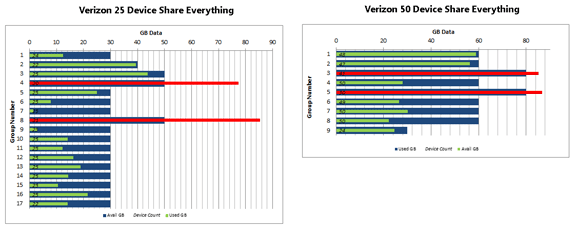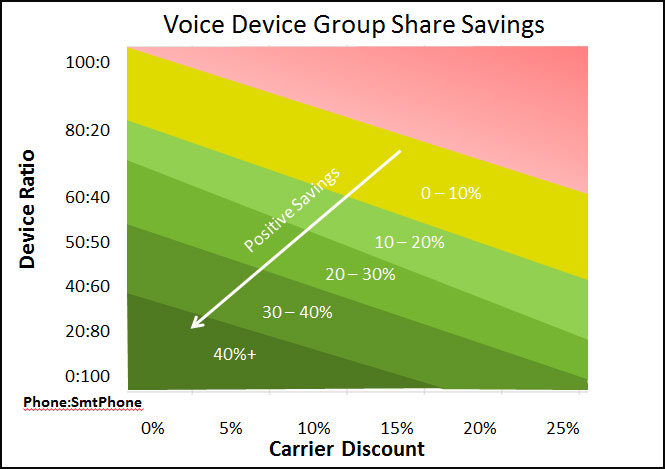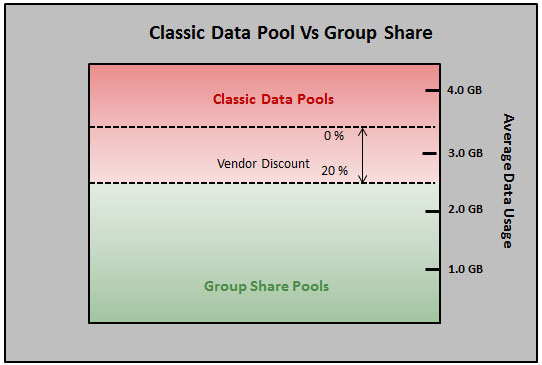Saving with Larger Verizon ‘Puddles’
New 50 Device Capacity Brings Savings
Verizon recently announced a capacity increase for their More Everything pool groups. Now available for optimization of pools are new capacities that are double the prior limits (100GB, 80GB, 60GB) versus the older (50GB, 40GB, 30GB) plans. It turns out they don’t offer any economies of scale for the new larger plans, the 100GB plan is exactly double the 50GB price and the same is the case for the 80GB and 60GB versus the 40GB and 30GB offerings. If you are paying exactly double for twice the capacity you might expect little savings by forming larger pools. However, there are some elements at play here that will likely yield savings for the majority of Verizon customers who take advantage of consolidating to larger Verizon More Everything pools. As of yet AT&T has not matched these higher capacity Group Share pools but they are likely to follow suit. Verizon may be the first to push the limits even higher because of a quirk to their billing systems. Where AT&T allows for multiple pools on a single Billing Account, Verizon forces you to create separate Billing Accounts for each More Everything pool. That means that any movement to consolidate or re-arrange devices in pools for Verizon requires an account change where AT&T merely has to change the Group to which a device is assigned. For these reason we project Verizon will be more aggressive in raising the capacity.
The graphs above represent the number of groups required on Verizon for 425 devices. On the left is a view under the previous 25 device limitation and on the right the new 50 device limit. With both optimized, the configuration on the right saves 5% over the configuration on the left. The Blue bar in the graphs above represents the capacity of a given pool from 30GB to 100GB. The colored inner bar represents the monthly usage against that capacity where Green has no overage and Red generates overage. In addition to reducing the management task by shrinking the number of overall pools, the right hand graph derives savings in two particular ways. First, the overage fees can be reduced where you can now address large data usage with higher capacity pools. Second, the limiting factor in Group Share is more often device count rather than data usage. This means you are adding groups where the device limit has been reached but not the data limit. More maneuverability is now available with higher capacity device limit, permitting better usage against the GB capacities. Less unused capacity monthly translates in this particular instance to a 5% lower overall cost. You are likely to experience the same benefits.


